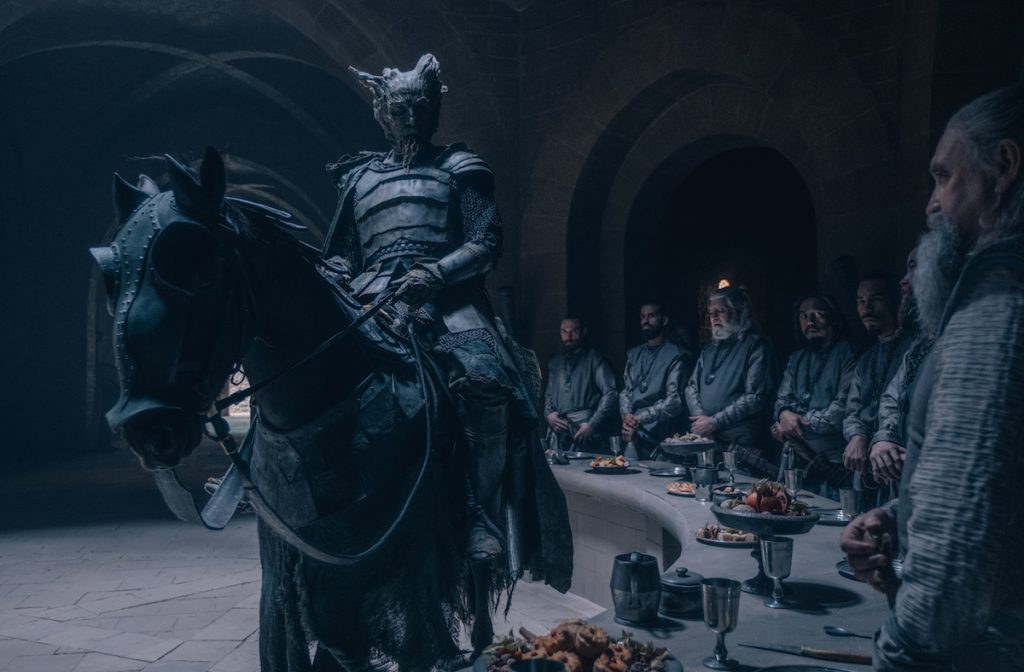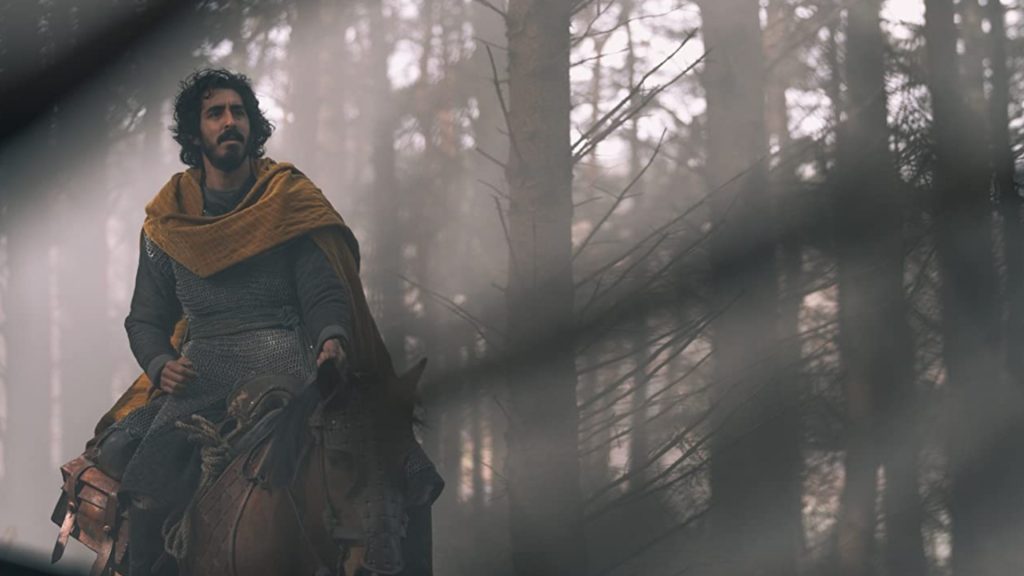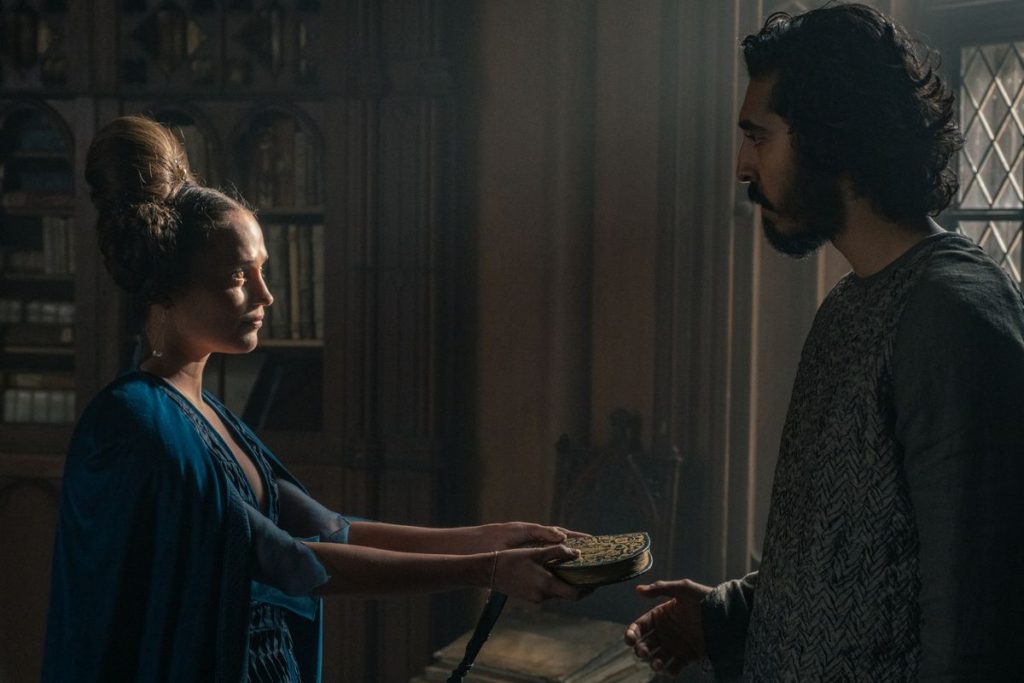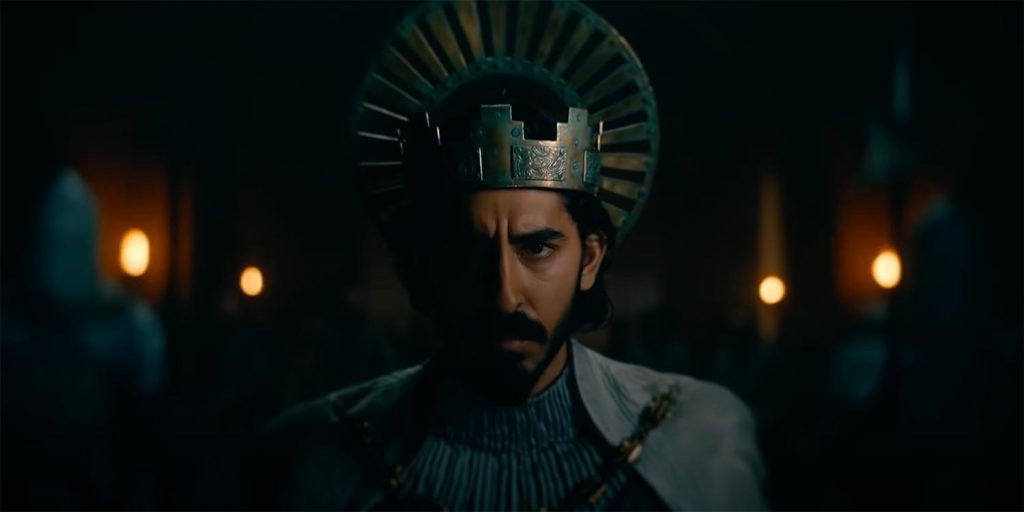Film Review: The Green Knight (2021)



Sometimes a movie comes along that seems like it was made just for you. David Lowery’s The Green Knight is such a film – rich in imagery, symbolism, superstition, and character. It is a truly fantastic and magical film that delights the mind and senses alike, while maintaining a near-fiendish level of cold and mythical foreboding that is impossible to ignore or forget. While admittedly not likely to please everyone, The Green Knight remains a visual, historical, and intellectual treat for those willing to commit to its cryptic offerings.

Based on a lesser-known Arthurian legend, The Green Knight chronicles the plight of Sir Gawain (a Knight of the Round Table and Arthur’s nephew, played to perfection by Dev Patel), who accepts an unusual Christmas Day challenge from a mysterious and monstrous figure known simply as the Green Knight (Ralph Ineson). The challenge is this: Sir Gawain is permitted to strike a blow against the Green Knight on the condition that, in one year’s time, the two shall meet again and the blow will be reciprocated. As a young man of ambition (not to mention questionable character and little forethought), Gawain eagerly beheads his foe – only to witness him rise, pick up his own severed head, and issue a grim reminder of their meeting to take place one year later.

This scene alone is unbelievably rich with a fascinating blend of pagan and Christian symbolism, reminding us that old-world superstition and Christian mythology are not so far removed from one another. The genesis of these legends, however, represent something deeper than swords from stones, ladies in lakes, or commandments of any number: they are transitional stories of a societal intellect torn between old ways and new ideas – and of one rather awkwardly incorporating the other.

Pagan origins aside, The Green Knight is a deceptively simple morality tale in which a knight of dubious honor strikes a bargain he has no real intentions of keeping, and the temptations he’s faced with, and succumbs to, while making an ostentatious attempt at fulfilling his promise. This differs somewhat from the source material (a 14th-century poem written by an unknown author) in that the original story has Gawain complete his quest, only to find it was all a ruse meant to test his valor – and in which he is ultimately forgiven by his fellow knights for his momentary lapses in judgment. Everyone has a laugh and all is forgotten as Gawain’s saga is henceforth taken down as a reminder to be truthful and honorable. Lowery’s Gawain, however, is not so lucky.

Topping off this already intricately layered film is a stunning montage sequence in which Gawain envisions the rest of his life from the moment he leaves the Green Knight, to his eventual crowning as king, the ultimate betrayal of his beloved Essel (Alicia Vikander), and finally his death many years later. With shades of Scorcese’s The Last Temptation of Christ, The Green Knight ends with an irresistibly devilish swerve that ranks among my favorite final shots of all time (strangely, my actual favorite final shot of all time also concerns a beheading). The way in which Lowery bluntly and unforgivingly modifies this medieval story’s fabled ending is a revelation of sorts – one that not only confesses the true heart of the film’s protagonist, but acts as an admonishment of patriarchal structures and male fragility. And with this very low-key demonstration of feminist allyship, The Green Knight is elevated from a very good film, to one of the most remarkable achievements of the year.
